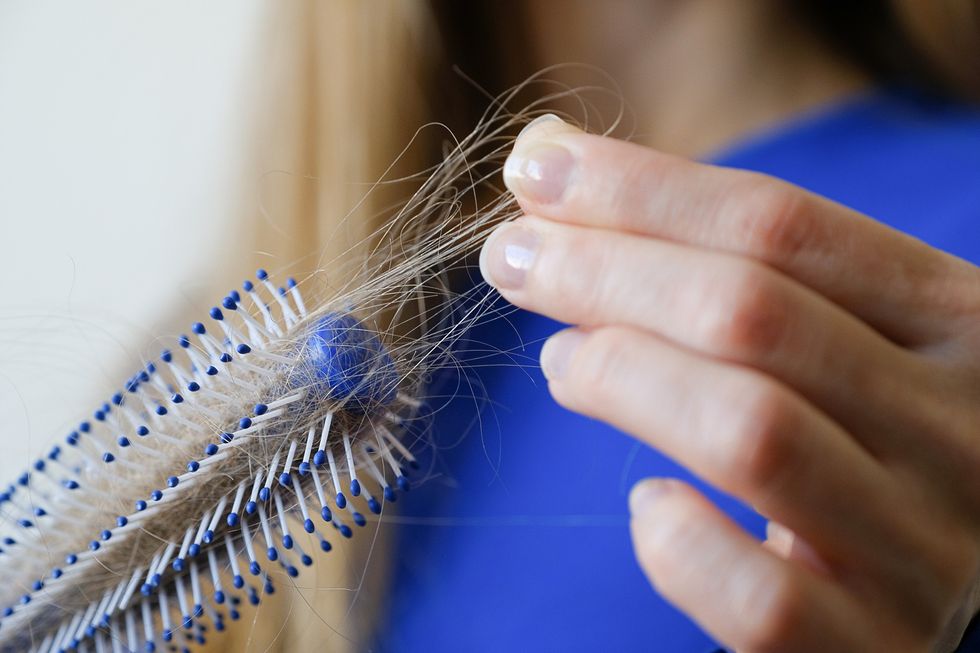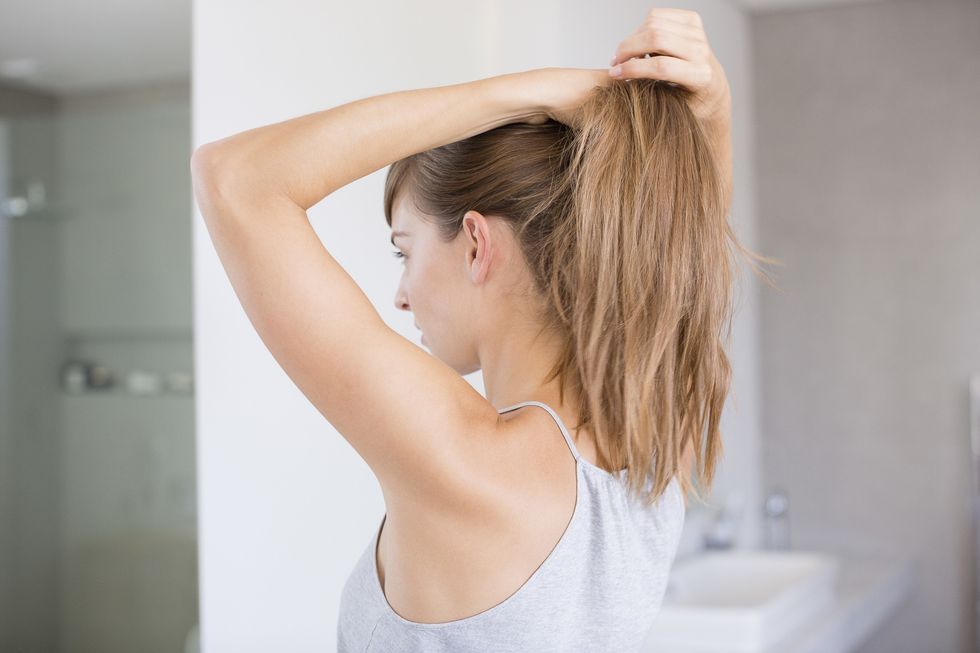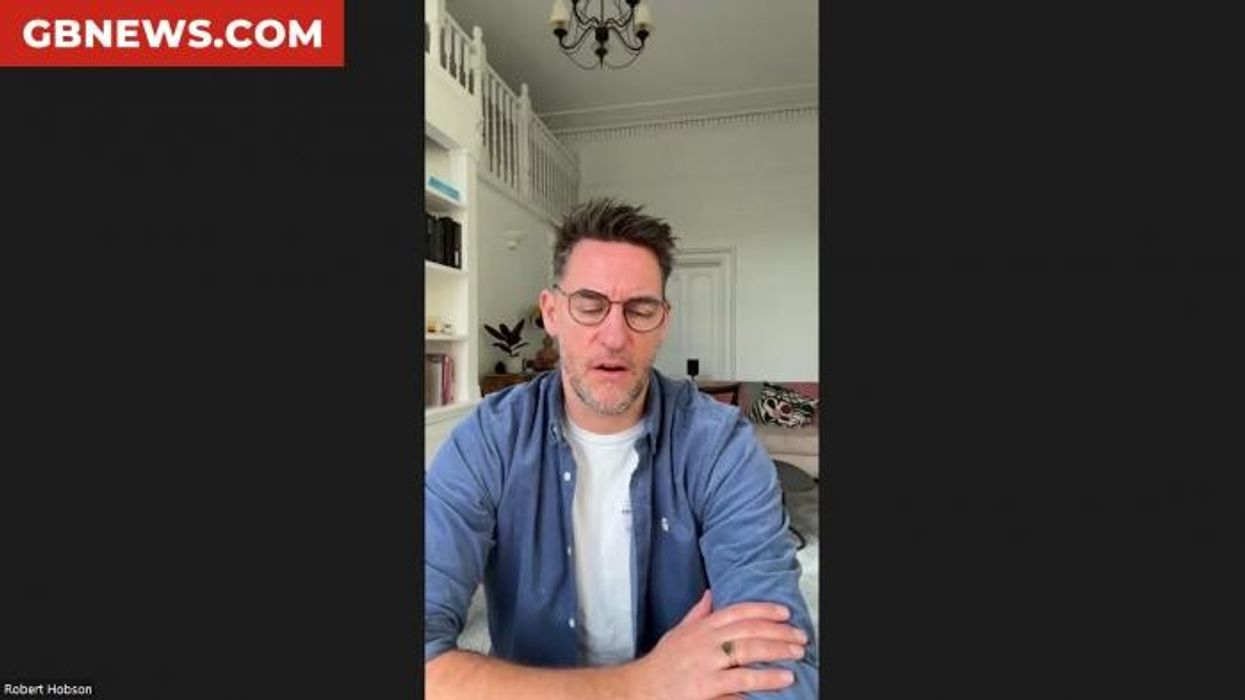Why is my hair falling out? Experts reveal underlying causes behind women's hair loss

Female pattern baldness remains the most common factor, but ageing, medical treatment, hair care and more can play a part
Don't Miss
Most Read
While hair loss is typically associated with men, it also affects countless women, proving particularly devastating when it strikes unexpectedly or during vulnerable moments in life.
Female pattern baldness or hereditary hair loss (medically known as androgenic alopecia) remains the leading culprit behind thinning locks, although there are many reasons you might notice more strands in your hairbrush.
The causes range widely, from the natural shifts that come with ageing, to unexpected triggers like stress or health conditions.
**ARE YOU READING THIS ON OUR APP? DOWNLOAD NOW FOR THE BEST GB NEWS EXPERIENCE**
What many don't realise is that hair loss in women often looks quite different from the receding hairlines typically seen in men, and understanding these differences can be crucial for finding the right treatment.
Hair specialist Zoey Taylor spoke exclusively to GB News about the various triggers behind women's hair loss.
"Female baldness is a multifactorial condition with numerous underlying reasons, and age is definitely one of the main ones," she explained.
The expert noted that during menopause, depleting levels of oestrogen and progesterone cause hair to spend less time in its growth phase.
LATEST DEVELOPMENTS:

'Female baldness is a multifactorial condition with numerous underlying reasons'
|GETTY
Ms Taylor also highlighted that female pattern hair loss leads to gradual thinning across the crown and front of the scalp.
She noted that stress can trigger temporary but significant shedding, while nutritional deficiencies, autoimmune disorders, and thyroid problems all play their part.
The expert concluded: "Frequent heat styling; hairstyles that pull the hair back tightly, such as ponytails or braids; and chemical treatments can physically harm hair, leading to breakage and thinning."
Beyond this, the American Academy of Dermatology (AAD) warns that extreme stress, childbirth, and medical treatment can all trigger hair loss, with chemotherapy cited as a well-known cause.

Hairstyles that 'pull the hair back tightly' can be damaging
|GETTY
Age naturally slows hair growth, with follicles eventually stopping production altogether. But early intervention can help some people regrow their locks.
Other causes include hormonal imbalances from conditions like polycystic ovary syndrome, scalp infections, and certain medications.
Experts stress that hereditary hair loss shows up differently in women than in men. Instead of receding hairlines, women typically notice overall thinning or a widening parting, for example.
The NHS estimates that roughly half of women over 70 experience female pattern baldness, which appears to run in families.
It takes many forms in women; while some experience gradual thinning, others face complete baldness.
The pace varies too – it might creep up slowly or happen suddenly, affecting women of all ages.
What should I do if I'm losing my hair?
The AAD offers hope for women experiencing hair loss, reassuring sufferers that regrowth is possible if they take appropriate action.
Regarding androgenic alopecia, "treatment can help stop or slow hair loss". Experts added: "It may also help regrow hair. The earlier the treatment is started, the better it works. Without treatment, you will continue to lose hair."
Identifying the root cause of your thinning hair is essential if you want to tackle the issue at hand.
For example, with cancer treatment, wearing a cooling cap before, during, and after each chemotherapy session may help prevent hair loss.
If your hair loss is down to stressors such as childbirth or illness, your body will readjust "when the stress stops".
Meanwhile, hair loss caused by thyroid issues can be eliminated by treating the thyroid.
Minoxidil remains the gold standard over-the-counter treatment for male or female pattern hair loss. As confirmed by the NHS, "many women see improvements after using it, including a slowing or stopping altogether of balding, as well as thicker hair".
Other expert-approved strategies include improving your diet, ditching damaging hairstyles, and upgrading your hair-washing routine.
Before starting a new treatment or making any major lifestyle changes, always consult your GP or dermatologist.











